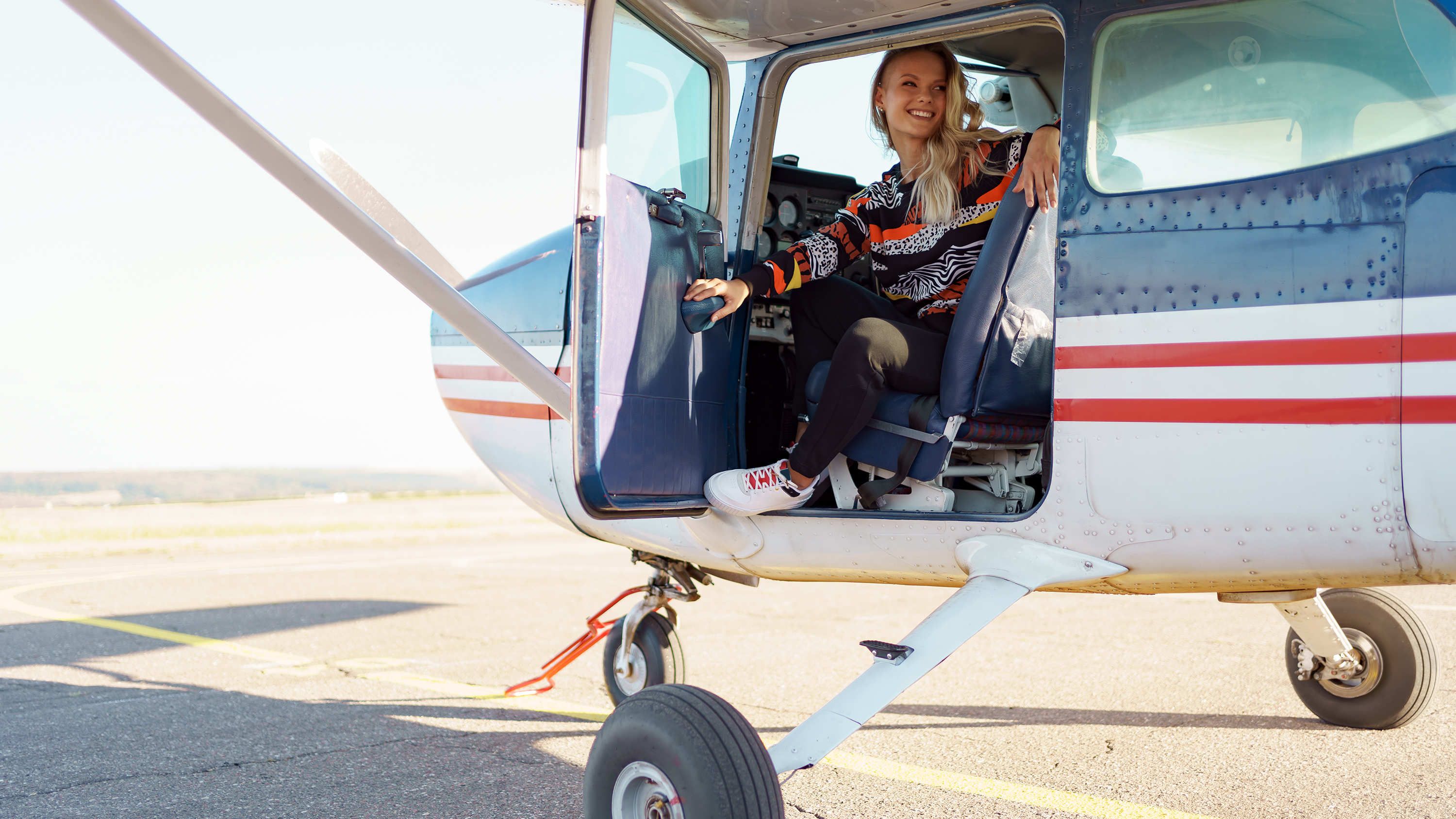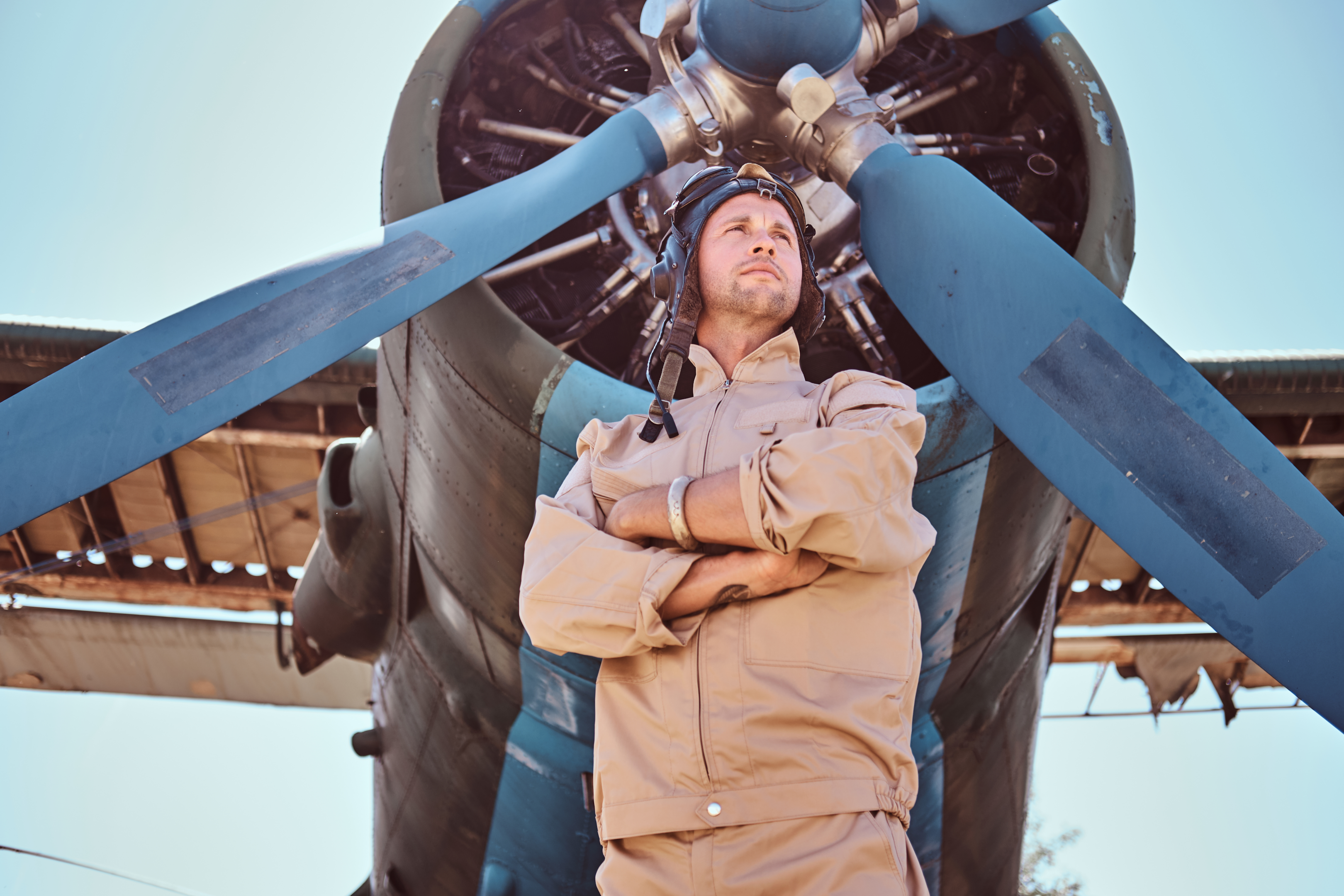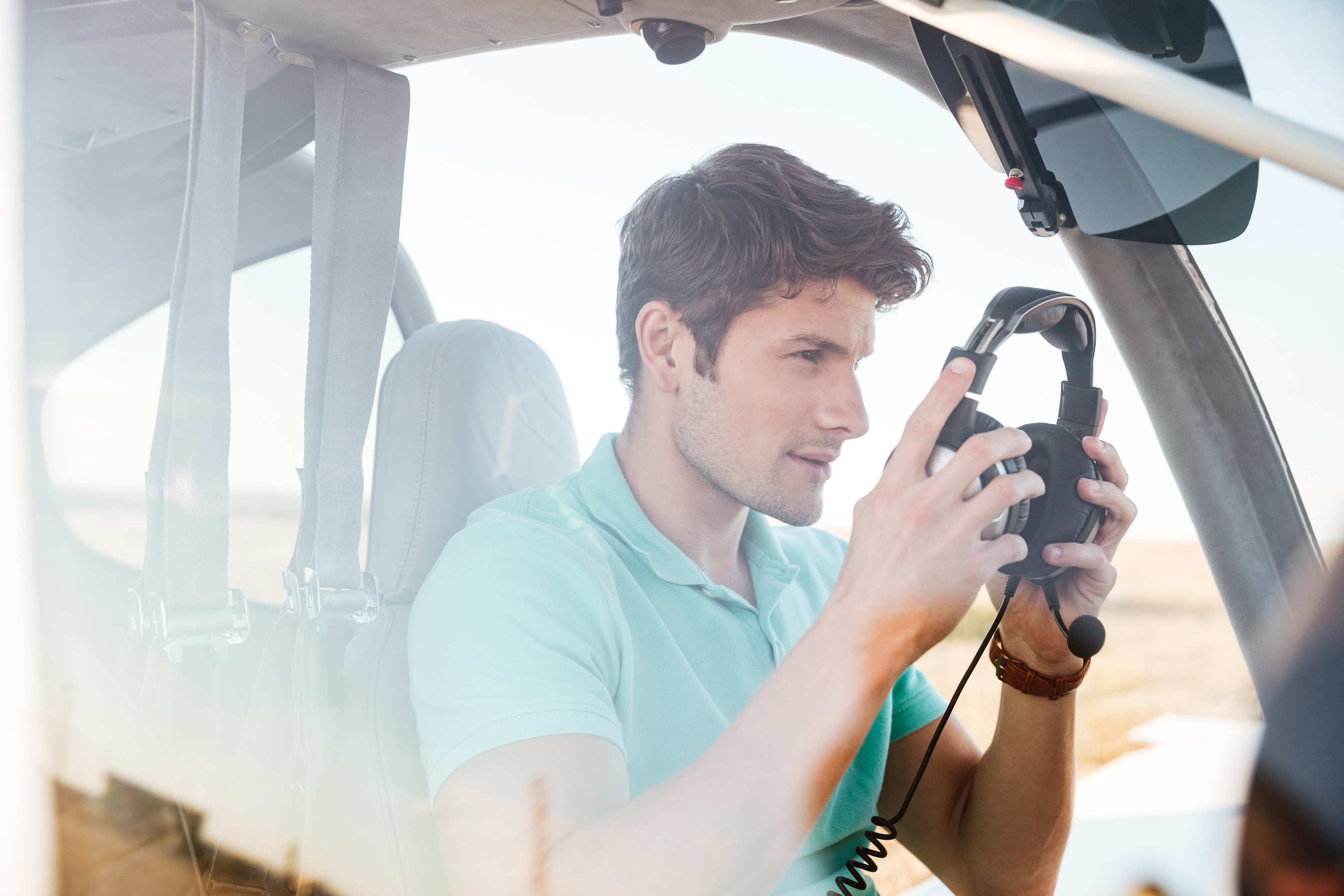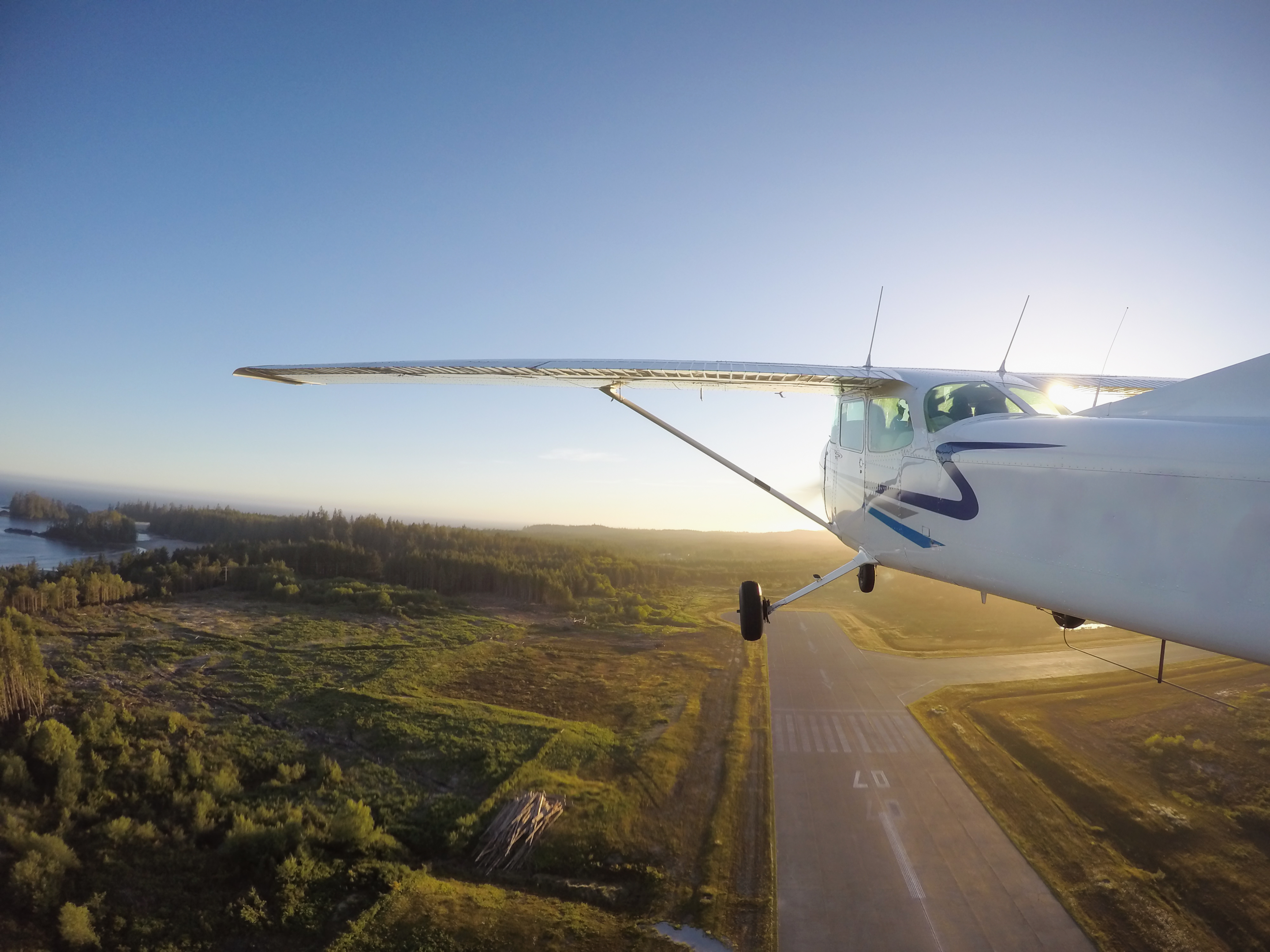Everything You Need to Know About Obtaining a Private Pilot License in 2024
Dec 18, 2023
Ah, the dream of soaring in the sky, breaking the bonds of gravity, and feeling the freedom of flying! If you’ve ever watched a bird in flight and felt a pang of envy, then this blog post is for you. We’re here to guide you on your journey to obtaining a private pilot license in 2024. So fasten your seatbelts, and let’s embark on this exciting journey together!
Short Summary
-
The journey to becoming a private pilot requires commitment and dedication.
-
Essential requirements include age, language proficiency, medical fitness, and student pilot certificate.
-
Obtaining a private pilot license involves ground school education, flight lessons & solo flights. Budgeting for costs is essential with strategies in place to reduce expenses.
The Journey to Becoming a Private Pilot

Taking the first step towards becoming a private pilot is akin to embarking on a thrilling expedition. This journey involves exploring your passion for flying, finding the right flight school, and understanding the commitment required.
This expedition will guide you towards your dream of cruising the skies with your private pilot’s license in your pocket, setting the foundation for your future as an airline transport pilot through our private pilot course and future aircraft pilot training for private pilots.
Exploring Your Passion for Flying
Feeling the adrenaline rush as the aircraft lifts off the ground and the landscape shrinks beneath you is an incomparable experience. This journey of exploration not only offers a sense of adventure and challenge, but also leads to personal growth and possibly, a career in aviation. Earning your private pilot license is a passport to a world of new possibilities.
However, obtaining a private pilot license is not a stroll in the park. It necessitates dedication and commitment. You must attend ground school, complete flight lessons, and pass both written and practical exams. The journey to becoming a private pilot is indeed challenging, but the reward of being able to soar through the clouds is worth the effort.
Finding the Right Flight School
Selecting the right flight school is like choosing the perfect pair of running shoes for a marathon. It needs to fit you well, offering the support and comfort you need to reach your goal. When selecting a flight school, consider factors such as:
-
The type of aircraft available
-
The location of the school
-
The cost of the program
-
The instructors
It’s crucial to find a school that aligns with your aspirations and fits your needs, whether you aim to become an airline pilot or fly for leisure.
Researching and comparing various flight schools is the most effective approach to find the one that suits you best. Spend time visiting schools, talking to instructors, and even sitting in on a lesson or two if you can. This firsthand experience will help you gauge if the school’s environment and teaching methods resonate with you.
Understanding the Commitment
Becoming a private pilot requires a significant commitment. Completing an FAA-approved training course or program is part of the process to obtain a pilot certification. To qualify, one must pass both written and practical examinations, log at least 40 flight hours, at least 20 of which is with a certified flight instructor, and achieve solo flight time. It’s not just about the joy of flying; it’s also about the perseverance, dedication, and hard work you put into it.
While the journey is challenging, each step in the process brings you closer to the summit of your dreams. The commitment to training, the time spent in ground school, the hours of flight training, and the satisfaction of completing your first solo flight all contribute to building you into a confident and competent pilot.
Essential Requirements for a Private Pilot License

Like any valuable achievement, obtaining a private pilot license requires meeting certain requirements. These essential prerequisites include:
-
Age
-
Language proficiency
-
Medical fitness
-
Acquisition of a student pilot certificate.
Let’s dive deeper into these areas to understand what it takes to become a private pilot.
Age and Language Proficiency
Dreams of flying are not bound by age. However, to turn these dreams into reality, there are certain age requirements. To fly solo, you must be at least 16 years old, and to obtain a private pilot license, you must be at least 17. So, whether you’re a high school student or a retiree, it’s never too early or too late to start your flying journey.
In addition to age, you must be proficient in English - the international language of aviation. Being able to:
-
read
-
write
-
speak
-
comprehend
English is critical for safety in the skies. From communicating with air traffic control to understanding weather reports and airplane manuals, English proficiency is a must for every pilot.
Medical Fitness and Student Pilot Certificate

Just as athletes need to be in peak physical condition to perform, pilots also need to meet certain medical standards. Medical fitness is essential to handle the physical demands of flying. To obtain a private pilot license, you must pass a third-class medical exam. The medical examination ensures that you are physically able to operate an aircraft safely and involves a comprehensive check of your:
-
Vision
-
Hearing
-
Mental health
-
Cardiovascular health
-
Overall physical condition
In addition to medical fitness, obtaining a student pilot certificate is a critical step on your journey to becoming a private pilot. This certificate is like your learner’s permit for the sky, allowing you to fly solo under the supervision of your flight instructor.
In-Depth Look at Private Pilot Training

Private pilot training is like a complex puzzle, where each piece represents a different aspect of the training - ground school education, flight lessons, and solo flights. Together, these pieces form a comprehensive picture of what it takes to become a private pilot.
The ground school education is the foundation of the puzzle. It covers topics such as aviation regulations.
Ground School Education
Ground school is the foundation upon which your flying skills are built. Think of it as the classroom phase of your pilot training. Here, you’ll learn the theoretical aspects of flying, including:
-
Aerodynamics
-
Navigation
-
Meteorology
-
Aviation regulations
Ground school prepares you for the written exam and gives you the knowledge you need to make safe and informed decisions in the air.
There are several options for ground school education, including self-study, in-person classes at a flight school, or online courses.
At Flight Nerd Air Force, we have a membership called the Briefing Room Squadron which includes helpful tools like:
-
Member community
-
Access to an FAA licensed instructor
Regardless of the method, the goal remains the same: to arm you with the essential knowledge you need to pass the written exam and become a confident and competent pilot.
Flight Lessons and Solo Flights
While ground school lays the theoretical foundation, flight lessons provide the practical skills you need to fly an aircraft. Under the guidance of a certified flight instructor, you’ll learn how to:
-
Take off
-
Land
-
Navigate
-
Perform various aircraft maneuvers
These lessons are like your driving lessons, just in the sky!
Solo flights, on the other hand, give you the chance to put what you’ve learned into practice on your own. The first time you fly solo is a milestone that every pilot remembers. It’s the moment when you truly take control, building confidence and gaining valuable experience. These solo flights are an integral part of your flight training, preparing you for the final step - the practical exam.
Navigating Exams and Checkrides

Just as a mountain climber must navigate through challenging terrains to reach the summit, a private pilot license candidate must navigate through exams and checkrides. These assessments test your aeronautical knowledge and flying skills, ensuring you’re ready to take to the skies as a private pilot.
The exams are designed to assess your understanding of the fundamentals of aviation, such as airspace regulations.
Preparing for the Written Exam
The written exam is a crucial part of obtaining your private pilot license. This exam tests your theoretical knowledge of aviation, including topics like aerodynamics, navigation, and weather. It’s the first big hurdle in your journey to becoming a private pilot.
Preparing for this exam requires diligent study and practice. Here are some steps you can take to prepare:
-
Use resources such as the ASA's Private Pilot Prepware to familiarize yourself with the material.
-
Take practice tests to assess your knowledge and identify areas that need improvement.
-
Utilize study aids such as Flight Nerd Air Force's Briefing Room Squadron to supplement your learning.
-
Review and reinforce your understanding of the material through regular study sessions.
-
Stay organized and create a study schedule to ensure you cover all the necessary topics.
-
Seek help or clarification on any concepts you find challenging. You can find help inside the Flight Nerd Air Force Briefing Room Sqadron Community! Remember, the more prepared you are, the more confident you’ll feel when you sit for the exam.
The Practical Exam: What to Expect
After clearing the written exam, the next step is the practical exam, also known as the checkride. This is your opportunity to demonstrate the skills you’ve learned during your flight training. The checkride consists of an oral examination and a flight test, where you’ll perform various maneuvers and procedures.
During the oral examination, you’ll answer questions about aviation regulations, flight planning, and aircraft systems. The flight test is your chance to showcase your flying skills under the watchful eye of an FAA examiner. From pre-flight inspection to take-off, navigation, and landing, you’ll need to demonstrate that you can safely operate an aircraft.
Private Pilot License Cost Considerations

Just like with any significant investment, obtaining a private pilot license involves costs. These costs can range from flight training fees to the cost of exams and even aviation insurance.
Let’s examine these expenses in more detail and explore strategies to manage them.
Estimating Total Costs
The total cost of obtaining a private pilot license can vary widely, depending on various factors such as location, flight school, and type of aircraft used for training. The total cost can range from $6,000 to over $20,000. This includes the cost of ground school, flight training, study materials, exams, and insurance.
It’s important to note that these are estimated costs, and actual costs may vary. Additional costs may include travel expenses to the flight school, living expenses if the school isn’t local, and potential retake fees for exams or checkrides.
It’s a worthwhile investment in your dreams, but one that requires careful planning and budgeting.
Strategies for Reducing Expenses
While the costs of obtaining a private pilot license can add up, there are strategies to manage these expenses. One way is through self-study. By studying on your own, you can save on costs associated with classroom instruction. There are many resources available online and in books to help you prepare for the written exam.
Choosing a cost-effective flight school is another strategy. Comparing prices between schools and looking for discounts and special offers can help lower costs. Finally, exploring financial aid options can also help manage expenses. Some flight schools offer scholarships, and there are various loans and grants available for flight training.
Post-License Opportunities and Next Steps

Earning your private pilot license is just the beginning of your journey in the world of aviation. There are numerous opportunities and next steps to consider, from flying for fun and personal growth to advancing your aviation career.
Whether you want to fly for pleasure or pursue a career in aviation, there are many paths.
Flying for Fun and Personal Growth
As a private pilot, the sky is literally your playground. You can fly to new destinations, pilot at night, or even obtain a seaplane rating. These experiences not only add to your flying skills, but also lead to personal growth and a sense of accomplishment.
You can also use your flying skills to contribute to your community. Participating in charity events, such as Angel Flights, which offer free air transportation for those in need, can be a rewarding experience. The thrill of flying, coupled with the joy of helping others, can make your journey as a private pilot even more fulfilling.
Advancing Your Aviation Career
If you aspire to make a career in aviation, obtaining your private pilot license is the first step. From here, you can further your aviation education and skills by pursuing additional certifications and ratings. For instance, you may consider obtaining an instrument rating, which allows you to fly under instrument flight rules (IFR), or a commercial pilot certificate, which allows you to fly for compensation or hire.
Becoming a Certified Flight Instructor (CFI) is another career path to consider. As a CFI, you can teach others the joy of flying while building your flight hours - a win-win situation!
Summary
Embarking on the journey to obtaining a private pilot license is a thrilling venture. From exploring your passion for flying and finding the right flight school to navigating exams and managing expenses, the road to becoming a private pilot is filled with challenges and rewards. Once you’ve earned your license, the sky is no longer the limit - it’s your playground. Whether you choose to fly for fun, take part in charity events, or advance your aviation career, your private pilot license opens up a world of opportunities. So fasten your seatbelts and get ready to soar!
Frequently Asked Questions
How much does it cost to get a private pilot's license in the US?
Acquiring a private pilot’s license typically costs between $6,000 and $20,000, depending on the number of flight hours needed. FAA’s minimum is 35 to 40 hours, but most pilots require 60 to 75 hours.
Is a private pilot license hard to get?
Becoming a private pilot is no easy feat - flight training can be difficult due to factors such as cost and weather conditions.
The cost of flight training can be prohibitive for many aspiring pilots, and the weather can be unpredictable and cause delays or cancellations. However, with dedication and perseverance, it is possible to become a private person.
Can you fly solo with a private pilot license?
Yes, with a Private Pilot License you can fly solo after fulfilling the minimum requirements of 16 years of age, being able to read, speak, write and understand English, and holding at least a third-class medical certificate.
This training includes instruction in preflight preparation, takeoff and climb, cruise flight, descent and landing, navigation, and radio communication. Additionally, the student must pass a written exam and a practical test with an FAA-designated examiner.
What does a private pilot license allow me to do?
With a private pilot license, you can fly fixed-wing aircraft for recreational and other purposeful endeavors, such as exploring new destinations, participating in charity events, and even advancing your aviation career.
You can use your license to take friends and family on trips, or to take yourself on a solo adventure. You can also use it to volunteer your time and skills to help those in need, or gain experience and build your resume for a career in aviation.
What are the essential requirements to obtain a private pilot license?
To obtain a private pilot license, one must be at least 17 years old, proficient in English, pass a medical exam, and obtain a student pilot certificate.
